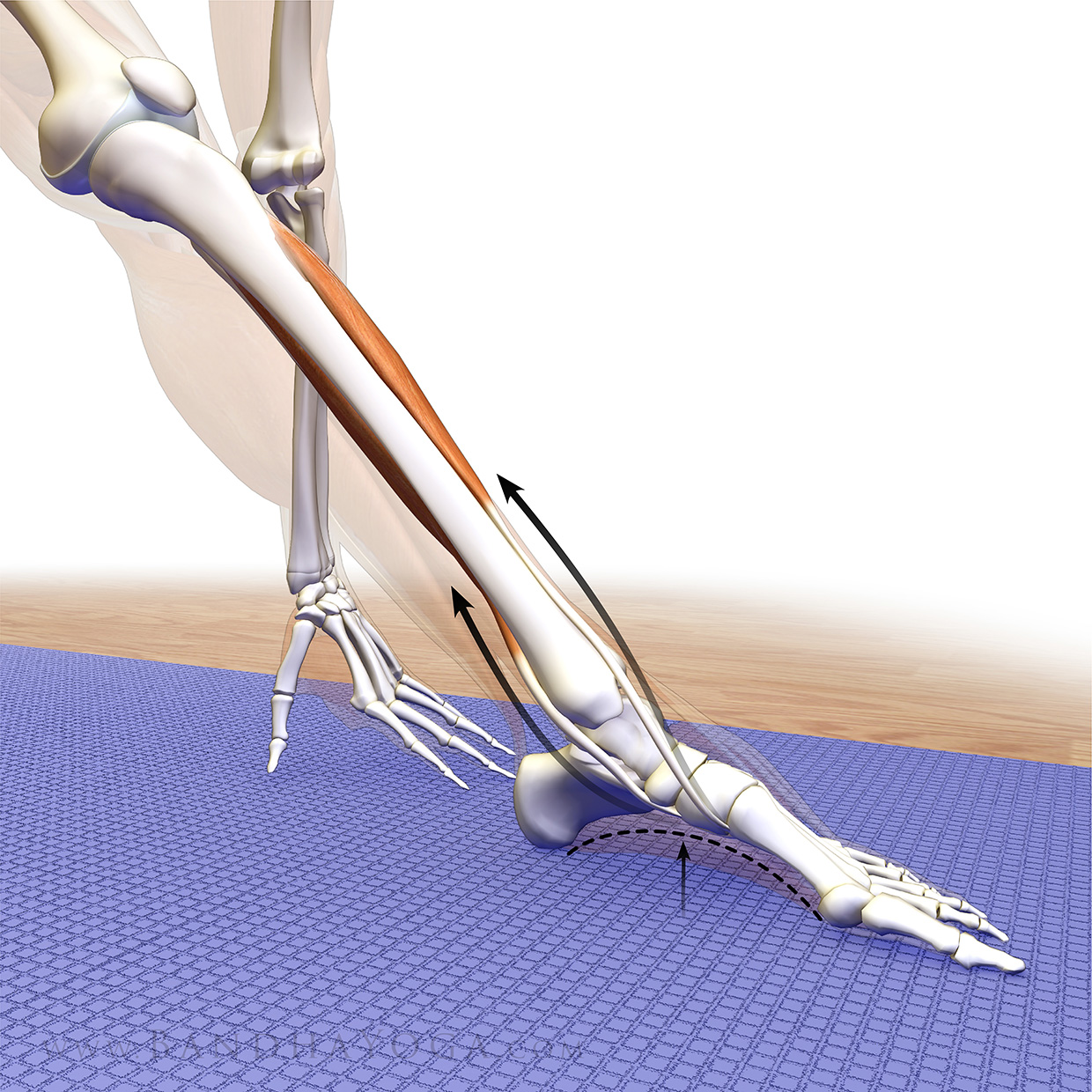Hello Friends,
William Blake said you can see the world in a grain of sand. Similarly, fundamental principles you master in one asana are portable to others. With this in mind, let’s look at the key elements for activating your foot arch in the front leg foot in Trikonasana (Triangle Pose). Here’s the cue…
First, press the outer edge of your foot into the mat. This engages the tibialis anterior and posterior muscles of the lower leg (figure 1).
Maintain that action as you press the ball of your foot into the mat. This engages the peroneus longus and brevis muscles on the outside of your lower leg (figure 2).
Co-activating the muscles that invert (supinate) and evert (pronate) your foot creates an opposing force between these two antagonistic actions that stabilizes your ankle.
These same muscles work together (as synergists) to lift your foot arch (figures 3 and 4).
Click here to learn about another antagonist/synergist combination. Click here to learn more about your foot arch…
Review the last two posts to see how to connect the foot arch to your core.
I hope you enjoyed this blog post. Page through the Key Muscles and Key Poses of Yoga and the Yoga Mat Companion Series to learn more about anatomy and biomechanics for yoga. See you next week when I will post another tip on anatomy and biomechanics for yoga.
Best,
Ray Long, MD
William Blake said you can see the world in a grain of sand. Similarly, fundamental principles you master in one asana are portable to others. With this in mind, let’s look at the key elements for activating your foot arch in the front leg foot in Trikonasana (Triangle Pose). Here’s the cue…
First, press the outer edge of your foot into the mat. This engages the tibialis anterior and posterior muscles of the lower leg (figure 1).
 |
| Figure 1 |
Maintain that action as you press the ball of your foot into the mat. This engages the peroneus longus and brevis muscles on the outside of your lower leg (figure 2).
 |
| Figure 2 |
Co-activating the muscles that invert (supinate) and evert (pronate) your foot creates an opposing force between these two antagonistic actions that stabilizes your ankle.
These same muscles work together (as synergists) to lift your foot arch (figures 3 and 4).
 |
| Figure 3 |
 |
| Figure 4 |
Click here to learn about another antagonist/synergist combination. Click here to learn more about your foot arch…
Review the last two posts to see how to connect the foot arch to your core.
 |
| An excerpt from "Yoga Mat Companion 1 - Anatomy for Vinyasa Flow and Standing Poses". |
 |
| An excerpt from "Yoga Mat Companion 1 - Anatomy for Vinyasa Flow and Standing Poses". |
I hope you enjoyed this blog post. Page through the Key Muscles and Key Poses of Yoga and the Yoga Mat Companion Series to learn more about anatomy and biomechanics for yoga. See you next week when I will post another tip on anatomy and biomechanics for yoga.
Best,
Ray Long, MD
